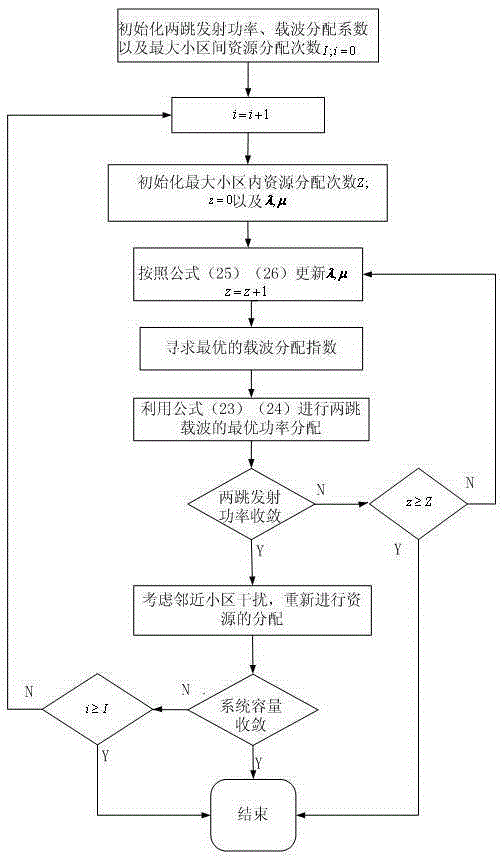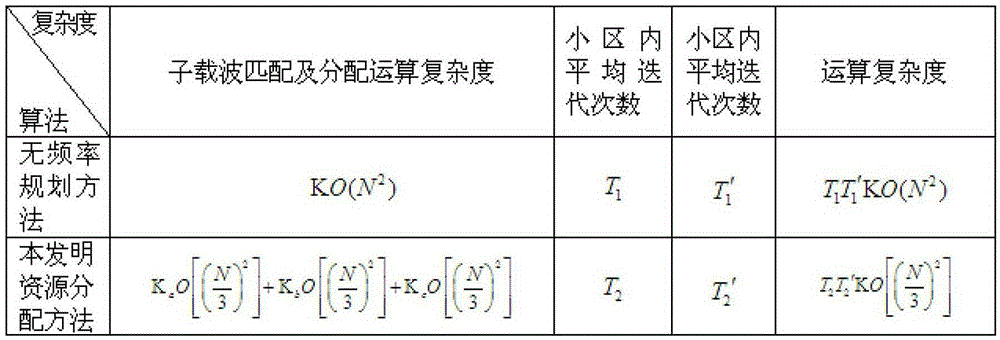Resource allocation method for multi-cell relay ofdm system with frequency planning
A system resource and frequency planning technology, applied in the field of communication, can solve problems such as high complexity and increased computational complexity
- Summary
- Abstract
- Description
- Claims
- Application Information
AI Technical Summary
Problems solved by technology
Method used
Image
Examples
Embodiment Construction
[0074] The specific implementation is further described below in conjunction with the drawings.
[0075] Such as figure 1 As shown in the schematic diagram of the system model of the present invention, consider a cellular mobile communication system with L cells (the value of L in the embodiment of the present invention is 7), each cell is a regular hexagon, and the base station is arranged in the center of the cell. M (the value of M is 3 in the embodiment of the present invention) relays are evenly distributed on a circle centered on the base station, and users are distributed in a ring area formed by the relay circle and the cell edge. Relaying adopts decoding and forwarding mode. A single cell in a multi-cell cellular system is divided into three areas, a, b, and c. Each area has the same number of users, and the three areas use the same number of different frequency carriers. That is, there is no frequency reuse between areas in the cell, and only one user or relay is allow...
PUM
 Login to View More
Login to View More Abstract
Description
Claims
Application Information
 Login to View More
Login to View More - R&D
- Intellectual Property
- Life Sciences
- Materials
- Tech Scout
- Unparalleled Data Quality
- Higher Quality Content
- 60% Fewer Hallucinations
Browse by: Latest US Patents, China's latest patents, Technical Efficacy Thesaurus, Application Domain, Technology Topic, Popular Technical Reports.
© 2025 PatSnap. All rights reserved.Legal|Privacy policy|Modern Slavery Act Transparency Statement|Sitemap|About US| Contact US: help@patsnap.com



